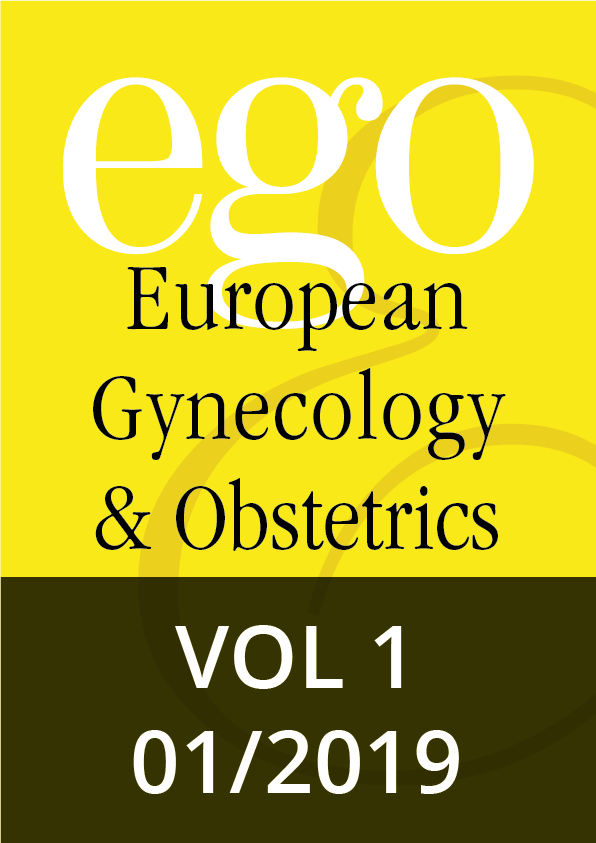In memoriam, 002–002
Editorial, 003–003 | DOI: 10.53260/ego.191011
Reviews, 005–009 | DOI: 10.53260/ego.191012
Reviews, 010–017 | DOI: 10.53260/ego.191013
Reviews, 018–023 | DOI: 10.53260/ego.191014
Case reports, 024–026 | DOI: 10.53260/ego.191015
Case reports, 027–028 | DOI: 10.53260/ego.191016
Original articles, 029–033 | DOI: 10.53260/ego.191017
Original articles, 034–038 | DOI: 10.53260/ego.191018
Original articles, 039–042 | DOI: 10.53260/ego.191019
Original articles, 043–047 | DOI: 10.53260/ego.1910110
Original articles, 048–050 | DOI: 10.53260/ego.1910111
Original articles, 051–054 | DOI: 10.53260/ego.1910112
Original articles, 055–060 | DOI: 10.53260/ego.1910113
Bone density and body weight is associated with MTHFR677 polymorphism in girls with anorexia nervosa
Original articles, 061–064 | DOI: 10.53260/ego.1910114
The LH/AMH ratio as a predictive value for the outcome of assisted reproductive techniques
Abstract
Purpose: This study was conducted to test the luteinizing hormone/anti-Müllerian hormone (LH/AMH) ratio as a possible new predictive factor for outcomes after controlled ovarian hyperstimulation (COH) in women undergoing in vitro fertilization (IVF) / intracytoplasmic sperm injection (ICSI) treatment.
Methods: This retrospective cohort study included 164 women submitted to their first IVF/ICSI treatment.
Results: Pregnancy and live birth rates were 21.5% and 18.6%, respectively. In a generalized linear model for the prediction of oocyte quantity after COH, age (odds ratio, OR, 0.98, 95% confidence interval, CI, 0.97;0.99), smoking (OR 0.83, 95%CI 0.68;0.99), AMH serum levels (OR 1.06, 95%CI 1.03;1.09) and a higher LH/AMH ratio (OR 0.97, 95%CI 0.96;0.98) were associated with oocyte quantity. For both ongoing pregnancy and live birth rates, only age was found to be predictive (OR 0.92, 95%CI 0.86;0.97, and 0.87, 95%CI 0.78;0.96; respectively).
Conclusion: The LH/AMH ratio is a new predictive parameter for oocyte quantity after COH. However, for the clinically more relevant outcome parameters of ongoing pregnancy and live birth, only patient age was significantly predictive.
Keywords: anti-Müllerian hormone, follicle-stimulating hormone, ICSI, IVF, live birth., luteinizing hormone, outcome, Ovarian reserve test, pregnancy rate
Citation: Marschalek J.,Nouri K.,Xaver Singhartinger F.,Hager M.,Marschalek M.,Walch K.,et al. The LH/AMH ratio as a predictive value for the outcome of assisted reproductive techniques, EGO European Gynecology and Obstetrics (2019); 2019/01:043–047 doi: 10.53260/ego.1910110
Published: September 2, 2019
ISSUE 2019/01

In memoriam, 002–002
Editorial, 003–003 | DOI: 10.53260/ego.191011
Reviews, 005–009 | DOI: 10.53260/ego.191012
Reviews, 010–017 | DOI: 10.53260/ego.191013
Reviews, 018–023 | DOI: 10.53260/ego.191014
Case reports, 024–026 | DOI: 10.53260/ego.191015
Case reports, 027–028 | DOI: 10.53260/ego.191016
Original articles, 029–033 | DOI: 10.53260/ego.191017
Original articles, 034–038 | DOI: 10.53260/ego.191018
Original articles, 039–042 | DOI: 10.53260/ego.191019
Original articles, 043–047 | DOI: 10.53260/ego.1910110
Original articles, 048–050 | DOI: 10.53260/ego.1910111
Original articles, 051–054 | DOI: 10.53260/ego.1910112
Original articles, 055–060 | DOI: 10.53260/ego.1910113
Bone density and body weight is associated with MTHFR677 polymorphism in girls with anorexia nervosa
Original articles, 061–064 | DOI: 10.53260/ego.1910114
